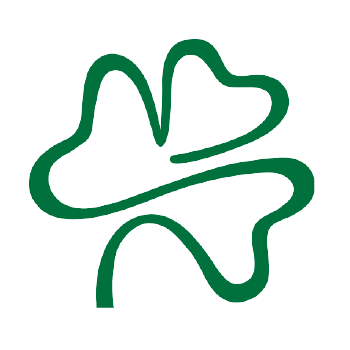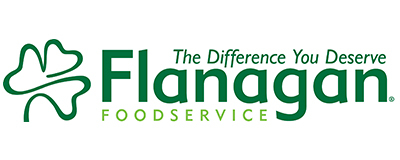
We collect basic website visitor information on this website and store it in cookies. We also utilize Google Analytics to track page view information to assist us in improving our website.

Atlantic Salmon, a name synonymous with health and taste, is not just a fish but a symbol of nutrition and a sustainable food source.
If you are looking for a healthy protein source for your menu, Atlantic salmon should be your go-to choice. Packed with Omega-3 fatty acids, it helps reduce inflammation, lower blood pressure, and decrease risk factors for diseases. Additionally, it is an excellent source of vitamin D, selenium, and B vitamins which are crucial for maintaining optimal health.
The taste can vary based on diet, habitat, and species, but generally, wild Pacific salmon is said to have a stronger flavour and more red-orange flesh, while Atlantic salmon has a milder flavour and paler flesh.
When comparing Atlantic and Pacific salmon, one cannot ignore the flavour variations among the five wild species of Pacific salmon. Each species brings a unique flavour profile to the table, from the rich, buttery Sockeye to the delicate, mild Pink salmon. However, the availability of wild Pacific salmon is highly seasonal and not available year-round. In contrast, the Atlantic salmon, renowned for its mildly sweet flavour and delicate texture, is readily available throughout the year thanks to aquaculture.
Aquaculture, in particular, plays a significant role in making Atlantic salmon accessible to consumers worldwide. It has revolutionized the seafood industry by providing a constant, year-round supply of high-quality fish. Moreover, it contributes to global food security and economic growth.
Atlantic salmon is sourced from many countries around the world. However, Canadian aquaculture stands out due to its exceptional levels of sustainability and traceability that other countries often lack. Canada's rigorous regulations ensure the health of the fish and the environment, making it a trustworthy source for Atlantic salmon.
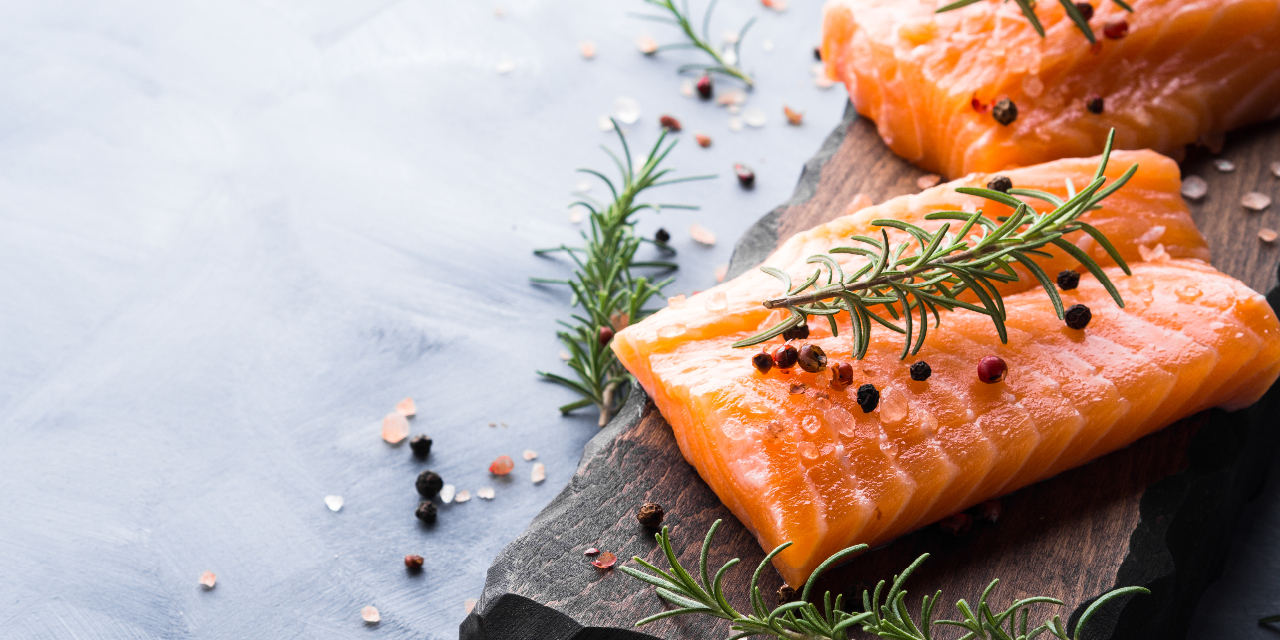
Its distinct buttery and rich taste, coupled with a firm and flaky texture, make it an excellent option for grilling, baking, or broiling. Not only does it deliver exceptional flavour, but it is also incredibly versatile, allowing you to create both indulgent and light dishes to suit any culinary vision.
To tantalize your customers taste buds, here are a few ideas:
grilled salmon with roasted potatoes and steamed vegetables,
pan-seared salmon with mango avocado salsa,
baked salmon with lemon caper sauce and fettuccine,
salmon Caesar salad with homemade croutons,
and salmon and sweet potato shepherds pie.
From its unforgettable taste to its limitless serving possibilities, fresh Atlantic salmon is undeniably a must-have for any establishment.
With a sprinkle of creativity and a dash of experimentation in the kitchen, your restaurant can provide your customers with an unforgettable dining experience.
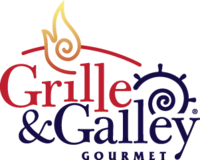
Did you know?
Grille and Galley Atlantic salmon is from the Canadian east coast, ensuring the freshest product for our customers. The Canadian product is not only fresh but also versatile. It comes in whole fish and various sizes of fillets, catering to different culinary needs. Custom portions are also available. Talk to your Territory Manager for more information.
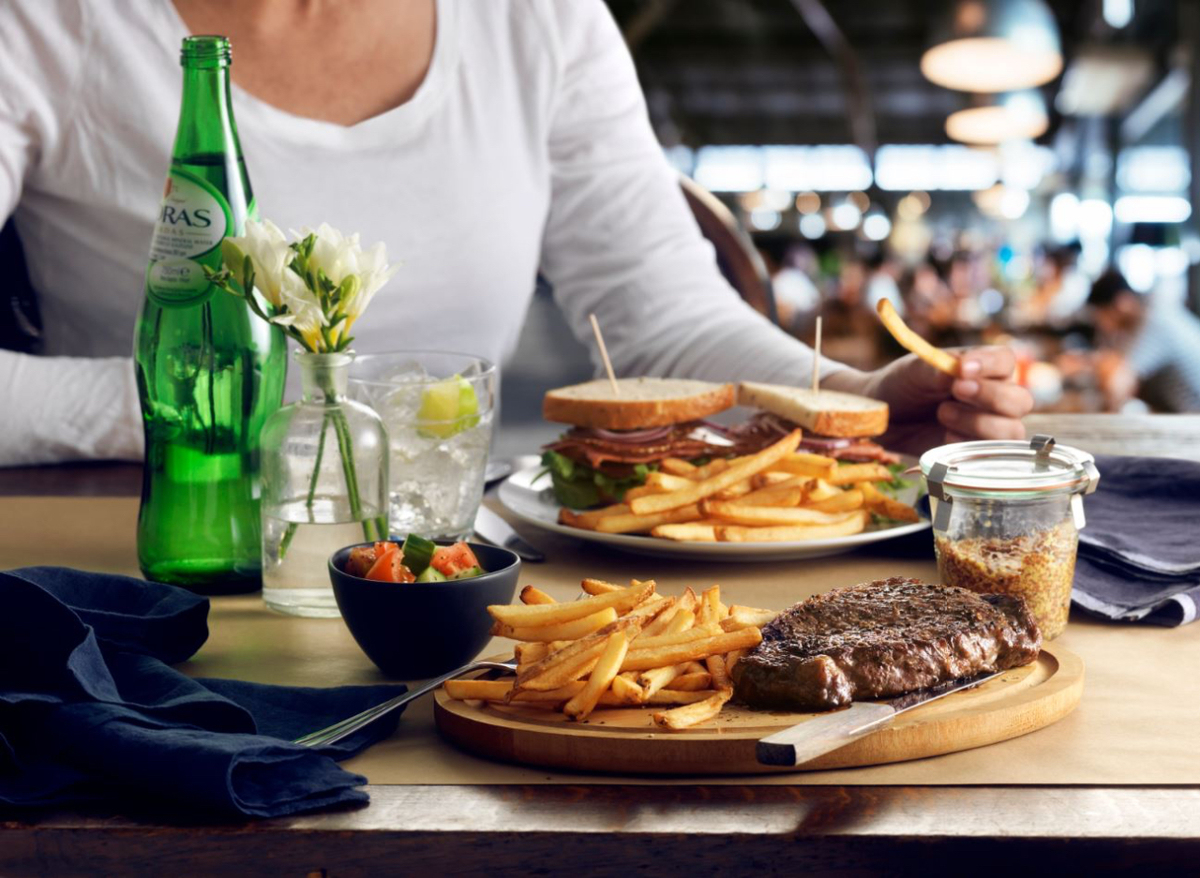
Cavendish Farms is a family food company that puts pride and dedication into everything they grow and make. Their varied product lines include clear coat, fine coat, and fresh cut fries; medallions; breakfast potatoes and more.
Cavendish is breaking down the advantages and benefits of both fresh cut and clear coat fries. Each option has low operating costs, consistent quality and taste, and the "crispy" factor—the #1 attribute of a great French fry.²
Restaurants that cut their own fries find that their costs are higher and the consistency of their fries are lower compared to restaurants that by a quality frozen product.
These are the top 10 reasons an operator drops hand-cut fries from their menu:
Too much labour - 38%
Difficult to keep consistent flavour - 34%
Takes too long to prepare - 31%
Found a frozen product of quality - 28%
Too much waste - 14%
Too difficult - 12%
Customers can't tell the difference - 10%
Other - 9%
Requires too much fridge space - 9%
Too expensive - 7%
Benefits
Available 3/8”, 7/16”, Shoestring, Slim Steak cut sizes, small/large diced and chips
Available Dark Red Norland, Kennebec and Russet potato varieties
On trend
The FreshCut Advantage over cutting your own:
Satisfy your customers’ growing demand for “real food” with Cavendish Farms® FreshCut. These premium skin-on fries and chips are the smart choice to deliver fresh, authentic potato taste.
Enjoy all the advantages of consistent, premium quality frozen fries available year-round. Straight from freezer to fryer, there are no extra labour costs. Get more servings per pound and use significantly less oil.
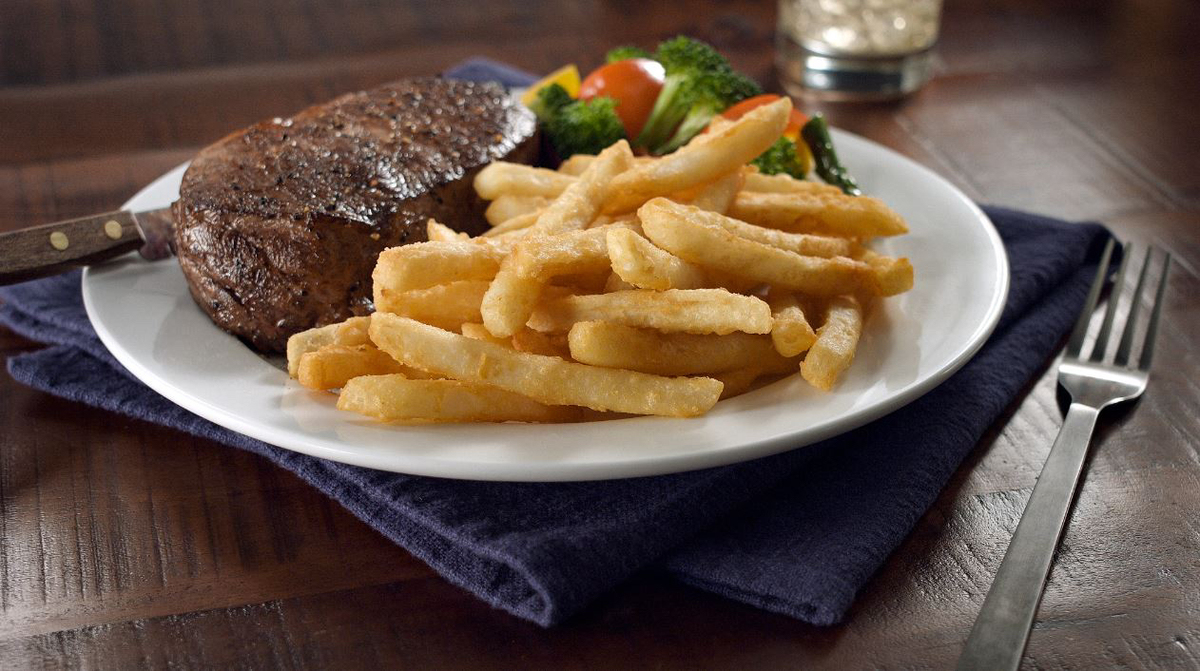
Customers love golden fries with a real buttery taste and that’s exactly what Clear Coat delivers.
Clear Coat offers the perfect blend of hold time and crispness that will ensure your customers have the perfect fry!
Benefits
For 20 years, Cavendish Farms® has been a leader in coated fries. Their proprietary recipe ensures these fries provide an unbeatable taste every time.
Promoting DeliverCrisp™ fries adds profit that helps offset delivery costs!
55% of restaurant delivery occasions are incremental, often replacing cooking at home. Fries are playing a profitable role on menus, and are the fastest-growing item on delivery orders.
Learn more about DeliverCrisp™ here, reach out to your Flanagan sales representative, or contact us.
Cavendish Farms is proud of their food. That’s why they use only premium ingredients and seasonings. You know you’re eating a Cavendish Farms potato or crispy appetizer when you taste the goodness of the farm in every bite.
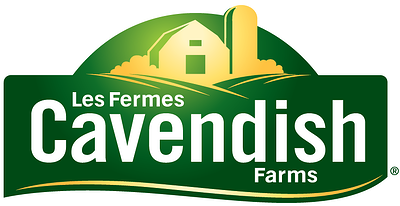
Article provided by Cavendish Farms®
For more information about Cavendish Farms products, speak to your Territory Manager, call Customer Relations, or visit www.cavendishfarms.com.
Sources:
NEILSEN: INGREDIENT STUDY AUGUST 2016 (Top 10 Reasons Operator Drops Hand-Cut Fries)
NPD CREST CANADA YE AUGUST 2017
CAVENDISH FARMS CLP RESEARCH, APRIL 2015
NPD POTATO TRACK YE DECEMBER 2018

Proudly Canadian owned, we're recognizing a new Canadian invention each week as we celebrate our great country's 150th year!
Paint Roller

1940: In 1940, Torontonian Norman Breakey came up with the idea of a painting tool that allowed anyone to easily paint walls, not just professionals who have time and patience to create a smooth finish.
Breakey envisioned a device that was shaped like a “7” that would hold a fabric-covered cylinder. He created the first roller, using it with a tin tray to hold the paint. Sadly, Breakey was unable to persuade investors to back his invention, and he lacked the funds to produce a significant supply of rollers. Manufacturers were able to easily duplicate his idea and produced their own (very similar) versions of the roller.
Breakey was never given credit for his invention, and did not reap any financial benefits. He may not have been recognized during his lifetime, but his work absolutely changed the lives of painters.
Insulin

1922: Insulin is a protein hormone that causes cells in your body to absorb glucose and use it for energy. Diabetes occurs when your body does not use or produce insulin properly. Though diabetes has been a medical condition for well over a thousand years, the discovery that diabetes is due to an insulin deficiency didn’t occur until the 1920s in Canada.
In 1921, Frederick Banting and Charles Best conducted a series of insulin manufacturing experiments at the University of Toronto. In January 1922, a diabetic teenager in Toronto received an injection of insulin, the first person to do so. He improved dramatically, and one year later in 1923, insulin became widely available (after the University of Toronto gave pharmaceutical companies license to produce insulin free of royalties). Many lives were saved as a result.
In that same year, Frederick Banting and John Macleod (a biochemist and physiologist who provided his laboratory to Banting for testing) received the Nobel Prize in Medicine.
Instant Replay

1955: George Retzlaff invented instant replay while working for CBC’s Hockey Night in Canada in 1955. He used a “wet film” (kinescope) replay of a goal which was then rebroadcast within thirty seconds. (Kinescope is the recording of television on motion picture film; the lens is directly focused on the television screen and then re-broadcast.)
Though the replay was not quite instant (as it was rebroadcast after 30 seconds), it was a pivotal moment in the history of sports broadcasting. Retzlaff also pioneered innovative camera angles that are still used today.
Butter Tarts

1900: The first recipe for butter tarts was published in the beautiful city of Barrie, Ontario in 1900. Wikipedia refers to butter tarts as “one of Canada’s quintessential desserts.”
The actual origin of the dessert (prior to the recipe being published) dates all the way back to the 1600s, when the idea of mixing syrup, eggs and dried fruit was more about using the ingredients on hand than intending to create a delicious treat.
The tart slowly evolved from there, and is now one of the few authentically Canadian recipes that exists on paper (and a personal favourite).
In case you’ve never tasted this delectable treat (!), butter tarts are made using just a few ingredients: a butter pastry shell, super, syrup, and eggs. Raisins or pecans are optional, but encouraged.
Five-Pin Bowling

1909: Thomas Ryan, born in Guelph, Ontario, moved to Toronto in 1905 with hopes of “making it big”. He opened the first ten-pin bowling club in Canada located in downtown Toronto (the intersection of Yonge and Temperance Streets). It was an elite establishment.
At the time, bowling was a “gentleman’s game”, and the men who worked near the bowling club would bowl during their lunch hour. They complained that the ten-pin game took too long; they would be too tired for the rest of the day after lifting the heavy bowling balls.
Ryan adapted the game to have five, lighter pins and a ball that weighed just 2.5 pounds: five-pin bowling was officially born.
Java Programming Language

1995: Java is a widely-used, general purpose computer programming language. It enables programmers to write computer code using English-based commands, rather than in numeric codes.
Java programming was created in the early '90s by a small team of engineers (called the “Green Team”) led by James Gosling. They initially created Java for use on digital mobile devices, though when the programming language was released in 1996, it became more centered to use on the Internet. It allowed developers to create animated webpages.
Today, Java is the force behind many smartphone apps, e-business solutions, and navigation tools.
Superman

1933: Superman (and his alter-ego, Clark Kent) was created by Toronto-born Joseph Shuster and Jerry Siegel of Cleveland. Shuster and Siegel were both high school students when they created the superhero and his story.
Initially, Superman was a villain determined to dominate the world. Siegel later re-wrote the character to be a hero, and spent the next six years searching for a publisher.
Superman’s debut appearance as a comic was in Action Comics in 1938, and the following year, a self-titled series was launched. Superman appeared in the McClure Newspaper Syndicate in 1939, and became a radio serial in the 1940s (1940-1951). In the '50s, a Superman television series was aired, and in 1978, Superman: The Movie is released, the first of many Superman-centered films.
To date, there have been 7 live-action television series, 7 animated television series, and 10 films about Superman and his story.
Trivial Pursuit

1979: Once called “the biggest phenomenon in game history” by TIME Magazine, Trivial Pursuit was invented in December of 1979 by Chris Haney and Scott Abbott while they played a game of Scrabble. Though they came up with the concept of Trivial Pursuit in only a few short hours, the game was not commercially released until November, 1981.
Initially, the game was being sold at a loss; it cost $75 to manufacture the game, and the game was being sold to retailers for $15. In 1983, Trivial Pursuit was licensed to Selchow and Righter (a major U.S. game manufacturer), and after a successful public relations effort the game became a household name.
To date, more than 100 million copies of Trivial Pursuit have been sold, with varying editions like the Star Wars Classic Trilogy Collector’s Edition (1997), Totally ‘80s (2006) and Trivial Pursuit for Kids (Volumes 1 to 6).
Computerized Braille

1972: The printing of braille was a slow and expensive process before Roland Galarneau, a legally blind Québécois, invented a new, efficient solution. In May of 1972, after the idea had come to him in a dream, Galarneau developed “Converto-Braille”: an electromechanical computer linked to a teletype machine that scanned and translated texts into Braille at a rate of 100 words per minute (ultimately eliminating the need to know Braille in order to transcribe a book).
At the time of Galarneau’s idea, microcomputers had yet to be invented. For the next five years, Galarneau built (from scratch!) the computer that could transcribe written texts into contracted Braille. He received a grant which went toward installing a micro-chip into the computers, which led to the publication of The Regional, a weekly newspaper in Braille.
Today, braille translation software can transcribe most languages as well as math and music.
AM Radio

1906: Reginald Fessenden, chief chemist for Thomas Edison and pioneer of wireless radio, invented AM voice transmission (later used as AM radios) as we know it today.
In 1897, after much research trying to improve the Morse code system without any luck, Fessenden took a break and was vacationing near Peterborough, Ontario to clear his head. During his holiday, ripples on a lake sparked the idea that perhaps sound could travel out from a centre continuously in the same way.
He spent the next nine years perfecting his idea in Massachusetts, and in 1906, Fessenden achieved 2-way voice transmission by radio between Machrihanish, Scotland, and Brant Rock, Massachusetts. It was Christmas Eve that Fessenden successfully made the first public broadcast of music and voice.
Despite his success, Fessenden did not receive recognition for his invention, and many of his patents were later adopted without his consent during World War II. Finally, in 1928, the US Radio Trust paid him $2.5 million in recognition of his contributions to radio technology.
Nanaimo Bars
1952: The Nanaimo Bar originated in Nanaimo, British Columbia – but that’s about all its residents can agree on when it comes to the origins of the chocolate, custard and coconut-graham base squares. Some say that the bar originated with Mabel Jenkins of Cowichan Bay, B.C., who submitted the recipe to a community cookbook in the 1950s. Others say the Edith Adams’ Cookbook published the inaugural recipe in 1953.
Nevertheless, this delicious treat is a treasured Canadian invention. The city of Nanaimo features many adaptations and variations to the favourite dessert, including deep-fried Nanaimo bars, martinis, lattes, cupcakes – even Nanaimo-themed pedicures!
In 1986, the city of Nanaimo held a contest to find the ultimate Nanaimo bar recipe. Joyce Hardcastle’s recipe was the winner of almost one hundred entries. The recipe is now holds the title as the official Nanaimo Bar recipe of the city. Her secret ingredient to the prize-winning treat? Unsalted butter; it mellows the sweet flavours of the bar. Nanaimo bar image provided by The Original Cakerie. |
 |
The Snowblower

1925: Dairy farmer Arthur Sicard invented the snowblower almost one hundred years ago in Saint-Léonard-de-Port-Maurice, Québec. During the winter, roads to the local town were too snow-covered for Sicard to deliver milk. In the summer, Sicard took note of the farming combines that would cut wheat and eject straw from the back of the vehicle. He was determined to create a vehicle or machine that could do the same thing to snow.
Sicard’s first few attempts were failures, and his neighbours thought him to be crazy. Finally, he created a vehicle that worked: a blower was attached to the front of a truck chassis and was propelled by a motor, with an adjustable chute. Despite initial mockery of his invention, Sicard was hired to clear the streets of the town.
A dairy farmer no more, Sicard patented his invention, founded Sicard Industries Ltd., and sold his first commercially-available snowblower to the town of Outremont, Québec. This invention allowed operators to propel snow (soft, hard, or packed) over ninety feet from the blower or directly into the back of a truck. In the 1950s, the first “walk-behind” snowblower was invented.
Though he passed in 1946, Sicard’s name lives on; Sicard Group (located in Québec and New York) supplies a complete line of industrial snowblowers, runway sweepers, and other related products to airports, municipalities, and military bases worldwide.
The Goalie Mask

1959: Initially considered a coward by hockey fans and purists, Montréal Canadiens goalie Jacques Plante was the first player to wear a mask during a game.
After a particularly bad hit to the face with a shot by Andy Bathgate of the New York Rangers, Plante left the ice to be stitched up. When he returned, he brought him with the homemade fiberglass mask he would wear during practices. Though he was mocked, Plante continued to wear the mask, and the Montréal Canadiens went on to win eighteen consecutive games that season. The goalie mask was officially born!
Since Jacques Plante’s fiberglass creation, the goalie mask has gone through many different designs to drastically improve players’ safety. (Plante had experienced over two hundred stitches and had his nose broken four times before he decided to protect his face.)
Today, all goalie masks are made of fiberglass, feature a “cage”, and can be decorated with cartoon characters or other designs.
It's no wonder we are proud to be Canadian!
References
Canadian Media Director’s Council Media Digest; Canadian Consumer Insights. 2014-2015.
Introducing the new Ocean Wise.
On World Oceans Day (Thursday, June 8, 2017), Ocean Wise unveiled a new logo to complement their new venture: along with the Vancouver Aquarium, Ocean Wise has launched a global conservation organization and a digital storytelling hub to inspire the next generation of ocean leaders.
The name of this new organization is Ocean Wise.
The initial Ocean Wise (sustainable seafood program of which Flanagan Foodservice is a proud partner), was founded by the Vancouver Aquarium in 2005. The program has expanded from 16 partners to 700 partners with thousands of locations across Canada.
As a result of its efforts to grow and the support and passion of its partners, Ocean Wise has been synonymous with being just that: wise about oceans. The new Ocean Wise organization will be supported by four key pillars: education, research, engagement and aquariums.
To learn more about the updates to the sustainable seafood program, visit www.ocean.org.
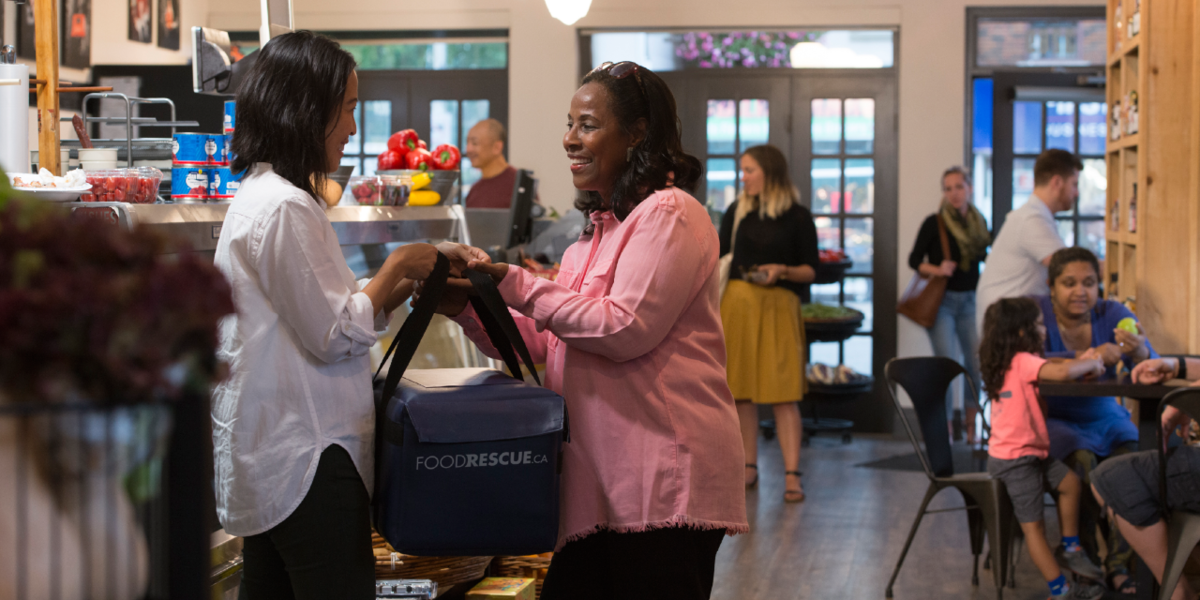
We live in a country that is rich in nutrient soil with incredible farming and safe food production practices. Still, 11 million metric tonnes of food is wasted in Canada annually. That works out to be almost 40% of all food produced in Canada. Not only does food in the landfill create methane gas—a leading cause of climate change—but 1 in 8 families in Canada currently struggles to put healthy food on the table.
Second Harvest, Canada’s largest food rescue organization, has been rescuing usable surplus food since 1985. To date, more than 140 million pounds of food has been recovered. It was Ontario’s ever-growing need to provide fresh, healthy food to hungry families that inspired Second Harvest’s innovative online platform, FoodRescue.ca.
FoodRescue.ca is a website that directly connects food businesses with surplus food to non-profits with limited funding and resources.
Veronica Summerhill, FoodRescue.ca manager, program and process development, likes to think of it as the eHarmony of food donations. “This system does the work to find partnerships, track a user’s positive impact and access additional resources for safe food handling and donations.”
FoodRescue.ca was conceived as a way to help other businesses and non-profits tap into Second Harvest’s expertise in food recovery.
“It increases access for non-profits to offer fresher, healthier types of perishable food that they often can’t afford on tight budgets,” adds Kim Couse, Second Harvest director of communications. She stresses the system is for any food business, anywhere, to safely donate any type and quantity of unsold food to any not-for-profit that provides food to those in need.
Food businesses can do so much good in their own neighbourhoods with just a few pounds of food donations a week. “We understand that restaurants work to have minimal food waste,” notes Summerhill, “but in instances where you have supplier samples that can’t be used, or maybe a catering order that doesn’t get picked up, FoodRescue.ca is a great option.”
It’s also a philanthropic story to tell. Donation metrics are tracked within the system so restaurants can easily see the number of meals provided in the community, total dollar value of their rescues, and even greenhouse gas emissions averted. Though this information is private, Summerhill says she’s seen a number of business share their positive impact with their customer base through social media.
Improving corporate social responsibility results in stronger community relationships, dedicated staff, and customer retention.
Restaurants stand to benefit from a financial standpoint, too, over-and-above reduced tipping fees. According to a study released by Champions 12.3, a global coalition to inspire action to reduce food loss and waste, restaurants see $7 profit for every $1 spent on food waste and loss reduction.
Register your free account
Go to foodrescue.ca/join-now to begin setting up your account. You’ll share basic details like your business name and contact information to get started.
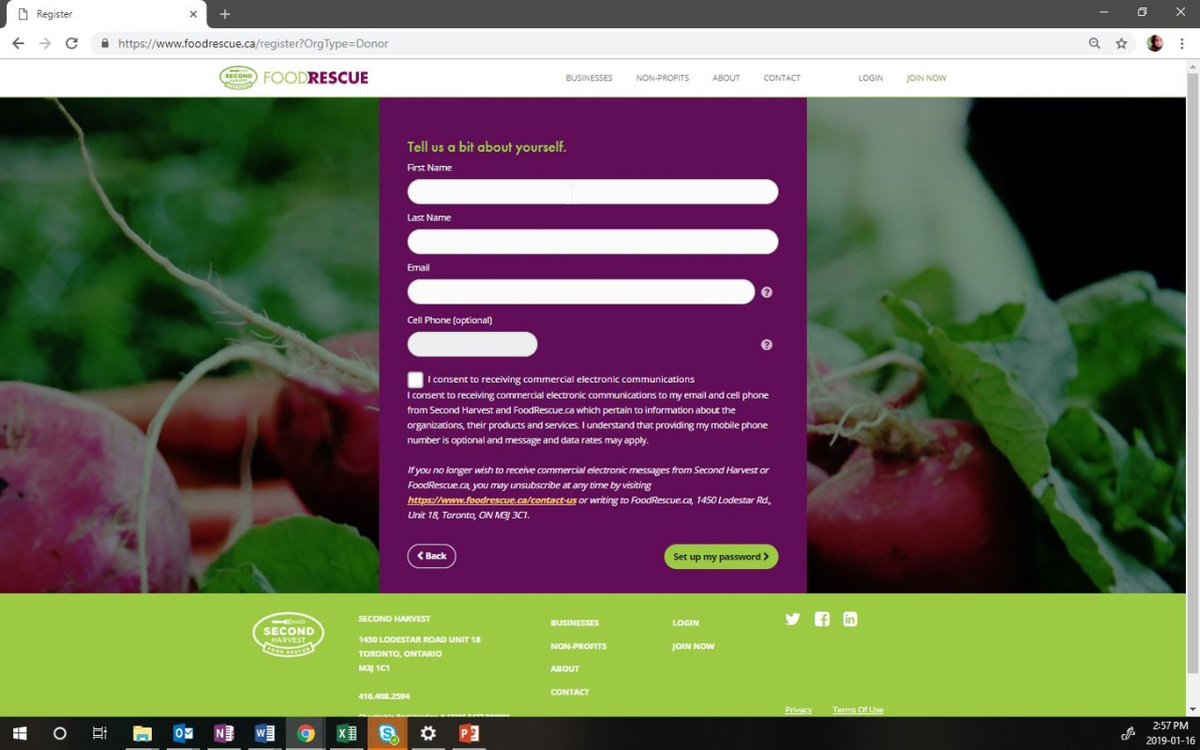
Enter details of your excess food
Let Second Harvest know what it is you’re offering. You’ll select your donation type (one-time or recurring), food category, and additional details like temperature and approximate weight.
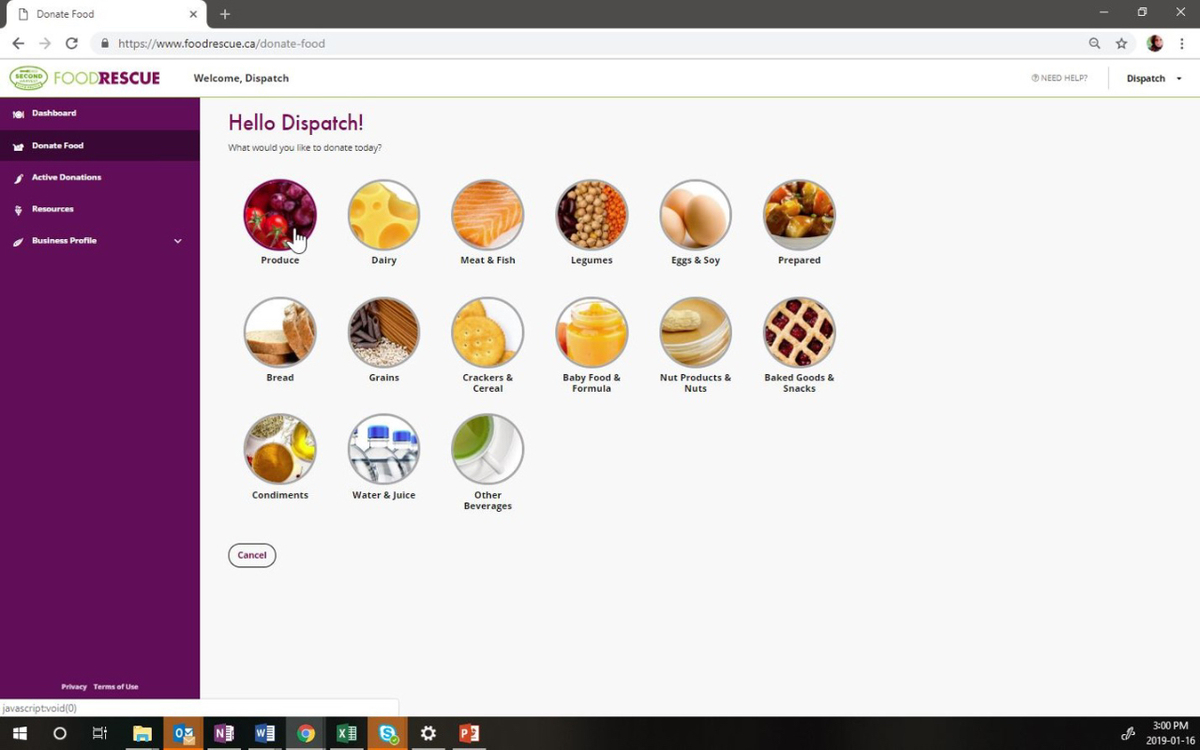
You have the choice of selecting a location you’d like to send your donation, or:
Be matched with an organization
Your donation is matched with a suitable organization in your community. That charity or non-profit will be notified of your offer.
Your food is picked up to be donated
If the organization accepts, they’ll pick up your donation at the location and time specified.
Partner organizations are provided with cooler bags, ice packs, and thermometers to ensure food safety is maintained throughout the entire chain of custody, explains Summerhill.
The Ontario Donation of Food Act protects businesses who donate food in good faith, and ensures no liability for the donor. For further peace of mind, social service organizations are screened by Second Harvest to confirm they are registered non-profits, have been Public Health inspected, and are educated regarding safe temperature-sensitive food transport.
“By providing surplus food to charity partners, food businesses are directly impacting the lives of individuals, organizations, and their community as a whole,” says Summerhill. “Community organizations are now able to offer more food programs, or even start a meal or snack program where there wasn’t one before.”
To date there are more than 700 food businesses and almost 600 non-profits in Ontario using FoodRescue.ca. Even still, greater business participation is the number one piece of feedback from non-profit partners, according to Summerhill.
“The appetite to rescue surplus food is large!”
For more information and to create your free account, visit foodrescue.ca.
